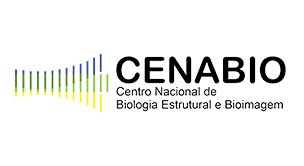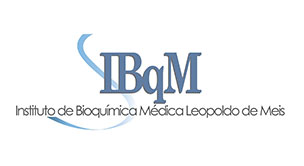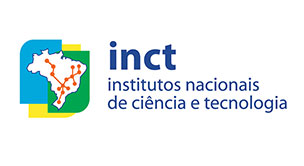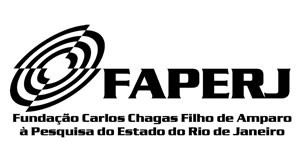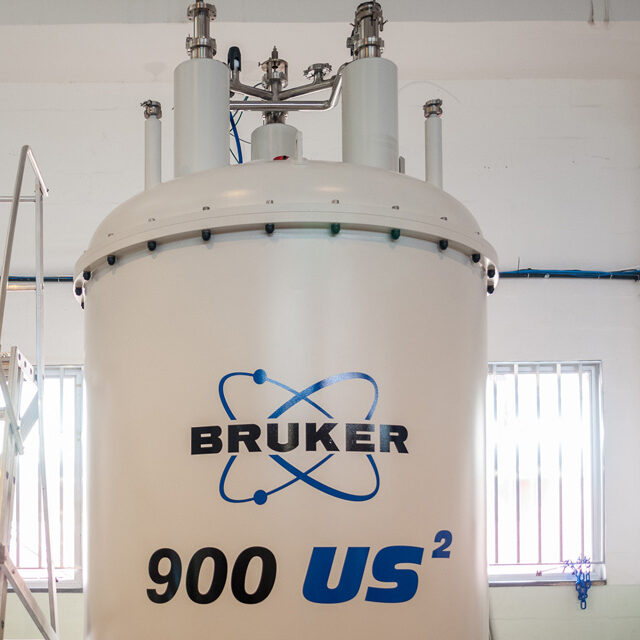
The headquarters of INBEB is located within the National Center for Structural Biology and Bioimaging (CENABIO), a multi-user facility whose infrastructure comprises equipment such as nuclear magnetic resonance, electron microscopy, atomic force microscopy, multiphoton microscopy, MRI and PET-SPECT-CT imaging, bioluminescence imaging, among other technologies.
Founded in 1997, the National NMR Center Jiri Jonas (CNRMN) is the birthplace of CENABIO. With funding from the former Millennium Institute of Structural Biology in Biomedicine and Biotechnology (now INBEB) in 2008, the unit acquired its powerful 800 MHz spectrometer and began its expansion. Today, the center boasts a newer and more powerful 900 MHz equipment.
Currently, CENABIO occupies a total area of 2,200 m2 at UFRJ, and is divided into three units:
Learn more on the CENABIO’s website.
The Multi-User Center for Biomedical Phenomena Analysis (CMABio) at the University of the State of Amazonas (UEA) is the result of a collaborative effort between groups from CENABIO and the Carlos Chagas Filho Institute of Biophysics at UFRJ (IBCCF/UFRJ). With support from the National Institute of Science and Technology for Structural Biology and Bioimaging (INBEB), these entities have been fostering academic development at UEA since 2014.
Through its shared infrastructure, CMABio serves as a vital research hub in the Amazon region, facilitating investigations in various fields, including strategic areas such as Amazonian biodiversity, identification of bioactive molecules, and development of new materials.
Located on the ground floor of the administrative building of the School of Health Sciences (ESA-UEA), CMABio features a structure designed to meet user needs. It includes a sample processing area for microscopic visualization and state-of-the-art equipment such as the Jeol JSM IT500 HR High-Resolution Scanning Electron Microscope with a Field Emission Gun, Leica TCS SP8 Confocal and Fluorescence Microscope, Leica DM4 Fluorescence Microscope, and JEOL JEM-1400 Flash Transmission Electron Microscope. With support from FINEP, CMABio is also in the process of acquiring a high-resolution liquid chromatography system coupled with mass spectrometry, ensuring ongoing advancements in research capabilities.
Diego Ferreira Regalado (CMABIO/UEA)
Wanderley de Souza (CENABIO/IBCCF-UFRJ)
Kildare Miranda (CENABIO/IBCCF-UFRJ)
Emile Barrias (INMETRO)
Marlene Benchimol (CENABIO/UFRJ)
Marcia Attias (CENABIO/IBCCF-UFRJ)
Wendell Girard Dias (CENABIO/IOC-FIOCRUZ)
Claudia Candida da Silva (UEA)
Hector Ferreira Koolen (CMABIO/UEA)
Paulo Afonso Nogueira (UEA)
Raimundo Sousa Lima Junior (UEA)
Wuelton Monteiro (UEA/FMT-HVD)
Ana Flávia Silva Chagas
Makoto Enoki Caracciolo
Glenda Ramos
ldenora Santos Vasconcelos
Jander Matos Guimarães
Jéssica Araújo Marques
Jéssica Sidou Lamarão
NB3 Laboratory for the diagnosis and development of therapeutic strategies for infectious diseases (LAB3DDI)
LAB3DDI is dedicated to research in the areas of infectious diseases caused by viruses and neurodegenerative diseases, through the manipulation of genetically modified organisms, viruses, and prion protein. It is a Biosafety Level 3 (NB3) laboratory, dealing with biological risk agents of class 3, i.e., microorganisms with high individual risk but low risk to the community. Its infrastructure is located at the Gregório Weber Laboratory of Proteins and Viral Structures at the Institute of Medical Biochemistry of UFRJ.

